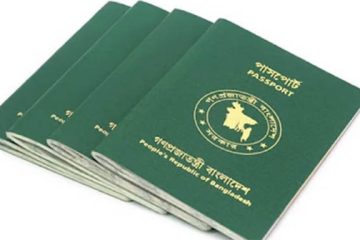The newly developed BRRI Hybrid-4 variety will make a significant contribution to boosting Aman rice production in the country.
The variety was released at the beginning of this year and now it is being cultivated at farmers’ level for the first time.
Agriculture experts of Bangladesh Rice Research Institute (BRRI) said this while talking to BSS on Saturday.
Director (Administration) of the BRRI Dr AKG Md Enamul Haque said that the BRRI has developed four hybrid of rice. Of those, three varieties are of Boro and one is Aman crop, he added.
Dr Enamul said the lone hybrid variety of Aman has been developed for cultivation in a favorable environment particularly in the flood-free areas.
The lifetime of the variety is 118 days, Dr Enamul said adding per hectare production of the variety is 6.5 metric tons.
The BRRI official said, “We need enough quality seeds for a wider cultivation of the variety at field level.”
The BRRI along with its partner organization are working to produce more seeds of the variety for bringing vast tracts of land under Aman cultivation, he said adding, “We are involving farmers in seed production process so that we can able to produce more seeds within a short time.”
The immediate past director (Research) of the BRRI Dr MA Salam said the average production of Inbrid Aman variety of BRRI is between 3.5 and 5 tonnes and lifetime of most of variety is long.
He hoped the newly developed hybrid Aman variety will get popularity among the farmers as it is a short duration crop.
Dr Salam said if the farmers want to get a good yielding of the hybrid variety, the saplings must be planted within 30 days of its age.
Dr Salam suggested the government to involve private organizations and farmers to produce more hybrid seed to meet its growing demand.
The BRRI Hybrid-4 will be an effective variety for the monga hit northern region of the country for its short duration quality, he added.
Director General of Seed Wing Anwar Faruque said the newly developed hybrid variety of Aman paddy this year is being cultivated at farmers’ level on a limited scale. He said, “We will be able to produce sufficient seeds of the variety within the next two years.”
Faruque said, “At present we are producing 40 percent of hybrid seed of our demand and would able to produce 60 percent in the next two years.”




















